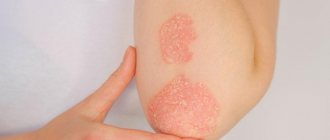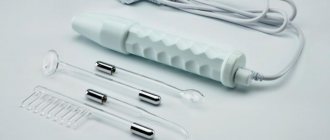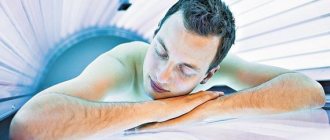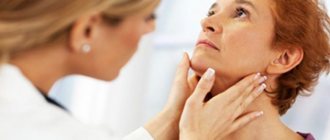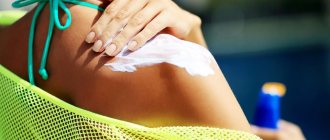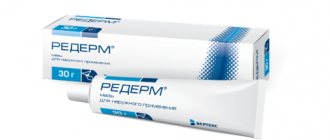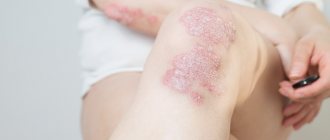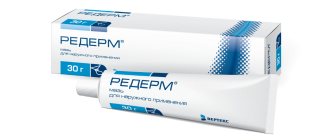In recent years, the world has seen an increase in the incidence of psoriasis, including among young people.[1] In Russia, according to research, there are about 3 million people suffering from this disease. [2] Psoriasis is a chronic inflammation of the skin that affects joints and even nails. The development of the disease is associated with the immune response and pathological activity of the cells of the upper layer of the skin. [3] A characteristic manifestation of psoriasis is a rash, most often occurring on the extensor surfaces of the arms and legs. Also, rashes can spread to the scalp and various parts of the body.
Advanced and progressive disease significantly affects the quality of life. Patients experience not only physiological, but also emotional discomfort - many patients with psoriasis become fixated on this problem, which leads to depression, rejection of close relationships and isolation.
Choosing the appropriate treatment for psoriasis is a rather difficult task, since there are many theories about the development of the disease, as well as factors that can cause exacerbation. Treatment must be comprehensive; choosing one or another therapeutic measure must take into account the form of the disease, stage, symptoms and individual characteristics of patients with psoriasis. To understand the principles of treatment, it is necessary to establish which factors cause the disease and provoke an exacerbation. The clinical picture of the disease and the severity of the course are also of great importance.
Reasons for the development of psoriasis
One of the most common causes of psoriasis is considered to be a genetic factor associated with sensitization of the immune system and pathologies of keratinocytes (cells of the stratum corneum of the epidermis). Researchers have proven the multifactorial nature of the disease with predominantly genetic determination, with the share of the genetic component being 60-70%, and the environmental component – 30-40%. [4] Unfortunately, scientists have not yet established which genes control the immune system failures that occur in psoriasis. The mechanism of the pathological process is as follows: the immune system gives the wrong signals, so the body, instead of getting rid of the affected skin cells, begins to accumulate them on the surface, forming plaques characteristic of psoriatic lesions.
Also common theories as to what causes psoriasis and exacerbations (more often in the cold season) are:
- viral;
- neurogenic;
- exchange;
- theory of congenital defects of skin capillaries.
Some scientists believe that, in addition to keratinocytes, T-lymphocytes and blood vessels are involved in the pathological process. This leads to the formation of inflammatory foci in the form of various rashes. [3]
Among the reasons for the development of total skin lesions in psoriasis, as well as their exacerbations, the following are considered:
- concomitant viral or bacterial infections;
- alcohol abuse;
- active smoking;
- mechanical damage;
- use of certain medications;
- emotional stress. [5, 6]
Why are neurodermatitis and psoriasis the same thing?
Both diseases are not contagious and there is no danger to people in contact. The severity of both diseases always depends on the psychological situation. Stress, resentment, feelings of loneliness and unfulfillment in life serve as an impetus for exacerbation and progression of the disease, and slow down recovery. Another common feature is that climatic therapy with the sun and sea, physiotherapy, acupuncture, and psychotherapy help very well.
For both pathologies: when a person undergoes treatment under the guidance of an experienced dermatologist and takes the treatment prescribed in the clinic, it is possible to cope with the disease without the use of hormones.
There are proprietary non-hormonal methods that can be completed at the Moscow PsorMak Dermatological Center. Sign up for a consultation by phone or online and start moving towards health. October 25, 2020
Author of the article: dermatologist Mak Vladimir Fedorovich
Symptoms of psoriasis
The clinical picture of psoriasis largely depends on the type and stage of the disease. This or that type of disease is determined by the location of the lesion and the type of rash. Currently, the following types of psoriasis are distinguished: [1]
- Ordinary or vulgar. It appears as dense, flat, pinkish rashes that rise above the skin level and are covered with loose scales. The scales fall off easily, and if they are removed, you can see a reddish surface with small pinpoint bruises. The rashes gradually merge into plaques of various shapes and sizes.
- Exudative. It is characterized by rashes covered with yellow lamellar crusts, which also contain scales. When the scales are removed, the surface of the lesion begins to get wet and bleed.
- Seborrheic. It appears mainly on the scalp, as well as on the nasolabial and behind-the-ear folds, between the shoulder blades, and on the chest. The rash is often accompanied by dandruff, in some cases spreading to the forehead.
- Palmoplantar. It is a rash with very dense scales. It is most often diagnosed in people whose profession involves heavy physical labor.
- Pustular. One of the severe forms of psoriasis, which is accompanied by an increase in body temperature. The rash appears as small, red, scaly blisters that most often appear on the palms of the hands and soles of the feet. Patients also complain of pain and burning in the affected areas.
- Arthropathic. In addition to skin rashes, the disease also manifests itself as joint pain, stiffness and swelling. With multiple episodes of exacerbations, the disease can deform the joints, and with further progression, even lead to disability.
- Psoriatic erythroderma. A disease with very rapid development and acute manifestation. Symptoms include severe redness and swelling, many scales merging into plaques. Patients may develop a fever and possibly experience joint pain. [1]
Sometimes psoriasis can affect the nails, deform them and change color. The affected nails may develop grooves and thickenings, they become brittle, and in some cases there is even discharge from under the nails.
There are three stages of psoriasis:
- Progressive - the appearance of new elements of the rash, an increase in vesicles and nodules, their fusion into plaques.
- Stationary – manifestations stabilize and stop.
- Regressive - gradual disappearance of the rash, delayed peeling, appearance of colorless spots at the site of the rash. [1, 7]
Psoriasis and neurodermatitis: common features
Sometimes these diseases can be confused by external factors:
- At an early stage, psoriasis appears as red nodules without peeling, which is similar to neurodermatitis.
- In both cases, the skin thickens, becomes drier and rougher.
- The elements are located on the hands, head and face, and in serious cases spread throughout the body.
- There may be a fusion of elements and inflammation due to an attached bacterial infection.
- In both cases the skin itches.
Similarities are observed during these illnesses: alternating exacerbations and remissions, when all manifestations completely disappear.
Features of treatment
Taking into account the large number of provoking factors, as well as the various manifestations of psoriasis, many treatment approaches have been developed. The most effective is considered to be a combination of drug therapy and non-drug measures. Also, many doctors emphasize the importance of diet and skin care. Patients are advised to reduce their consumption of fatty foods, give up alcohol, as well as confectionery and flour products. The diet should be dominated by proteins, which can be obtained from lean meat and fish, vegetables and dairy products. [7]
In the drug treatment of psoriasis, topical agents are used. They are aimed at reducing inflammation and peeling. The most effective are creams and ointments containing salicylic acid, as well as external glucocorticosteroids. [8]
Stages of the disease
The disease occurs in three stages, replacing one another. These are progressive, stationary and regressive stages. Sometimes the disease occurs during the development of several stages simultaneously.
Common psoriasis: Progressive stage
The progressive stage of widespread vulgar psoriasis in the medical history is characterized by the appearance of bright pink rashes. New spots appear on the body, and old ones may increase in size. The border of the papules does not peel off and has a brighter color than the main surface of the lesion. The inflammations are very itchy: scratching leads to new rashes.
Common psoriasis: Stationary stage
At this stage, the progress of the disease stops, and psoriasis continues its gradual development: the spots increase slightly and merge with each other, become flat and stop peeling. New rashes do not appear at the stationary stage.
Common psoriasis: Regressive stage
The plaques turn pale and gradually dissolve: most often they disappear from the center to the borders, taking on the shape of a ring. Sometimes the disappearance occurs, on the contrary, from the borders to the middle. White spots form at the site of former rashes.
Drug therapy with Akriderm drugs
Of all the Akriderm preparations presented, it is more advisable to use Akriderm SK ointment to combat psoriasis. This is a combination ointment containing both glucocorticosteroid and salicylic acid. Thus, it affects the source of inflammation in several ways:
- has an anti-inflammatory effect;
- provides antiseptic effect;
- has antiallergic properties;
- eliminates horny layers.
Salicylic acid promotes deeper penetration into the site of inflammation through skin thickened by psoriasis, where the glucocorticosteroid delivers a powerful therapeutic blow. Thanks to this thoughtful composition, Akriderm SK ointment acts quickly and has a favorable safety profile. It can also be used on the scalp. [9]
links to sources
- D.K. Nazhmutdinova. Clinical manifestations and treatment of psoriasis. Medical Council, No. 4, 2007, pp. 15-20.
- World Health Organization. (2016). Global report on psoriasis. World Health Organization.
- Berdnikova E. R. On the issue of the immunopathogenesis of psoriasis / Berdnikova E. R., Filimonkova N. N., Tuzankina I. A. Immunology. Allergology. Infectology. 2004; 5:27–30.
- Kungurov N.V. Peculiarities of inheritance of psoriatic disease based on pedigree analysis / Kungurov N.V., Filimonkova N.N. et al. Modern. problem dermatovenerol. im-munol. and medical cosmetologist. 2009; 3:44–48.
- Gudjonsson JE, Elder JT Psoriasis: epidemiology // Clin. Dermatol. 2007; 25 (6): 535–546.
- Elder L. et al. The association between smoking and the development of psoriatic arthritis among psoriasis patients // Ann. Rheum. Dis. 2012; 71(2):219–224.
- V. A. Molochkov. Psoriasis and psoriatic arthritis. Clinic, diagnosis, treatment. A manual for doctors. Moscow, 2015.
- Batyrshina S.V. Glucocorticosteroids for local use in the modern strategy for the treatment of inflammatory dermatoses in pediatric practice // Practical Medicine, 2014. No. 9 (85). pp. 94–102.
- Instructions for medical use Akriderm® SK.
Non-drug methods for treating psoriasis at our clinic
Good to know
- Treatment of psoriasis on the head
- Treatment of psoriasis on the elbows
- Treatment of psoriasis on the legs
- Treatment of psoriasis on nails
- Treatment of psoriasis on the hands
- Treatment of palmoplantar psoriasis
Non-drug methods are of great importance in the treatment of psoriasis on the face. Depending on the patient’s condition, the stage of exacerbation, and his individual characteristics, various non-drug methods are used either as part of complex therapy or independently. These same techniques are actively used to prevent exacerbations.
- PRP therapy is an effective technique that involves injecting the patient’s own blood, enriched with platelets, into the inflammation on the face. The course of treatment helps to activate metabolism and suppress autoimmune processes. It is carried out as part of complex therapy for exacerbations, as well as as anti-relapse therapy.
- Autohemotherapy is a method that has been used for quite a long time to eliminate psoriatic rashes with good results. The patient's blood taken from a vein is injected intramuscularly. There is a kind of shaking of the body; it copes with the disease with renewed vigor.
- Reflexology is an ancient Chinese method of treating all diseases, which is recognized by modern medicine. The method is based on a reflex effect on certain points on the body associated with various organs. You can influence the points in different ways: with needles, massage, cauterization. An experienced professional trained in China can treat a psoriasis flare-up without the use of medications.
- Vacuum therapy is a type of reflexology. Reflex points on the body are exposed to rarefied air. An effective technique in the hands of an experienced specialist.
- Herbal medicine is the use of medicinal plants for the treatment of psoriasis on the face. This allows you to reduce the drug load. It relieves inflammation and itching well, and prevents the development of infectious complications.
How facial psoriasis is treated at the Paramita Clinic
To avoid relapses, it is necessary to eliminate the cause of the disease.
Read more about our unique method of treating psoriasis
A special feature of prescribing therapeutic measures is an individual approach to each patient. This allows you to cope with any, even complex cases of psoriatic rashes on the face. The clinic’s doctors are well aware that psoriasis on the face causes not only physical, but also mental suffering, so they try to eliminate the rash as quickly as possible.
Psoriasis is a chronic disease that cannot be cured. But modern medicine has methods that make it possible to maintain this disease in a state of remission. For those who have psoriatic plaques located on the face, it is very important to choose a professional psoriasis treatment center and constantly carry out supportive treatment under the supervision of a doctor.
Sign up for a free initial appointment
What is remission
Remission comes from lat. Remissio, which means "decrease, weakening." In medicine, this term is applied to the period during a chronic disease when its symptoms and signs significantly weaken or disappear.
Thus, remission is not a complete recovery, but a period of improvement that can last for varying amounts of time. The term is applied only to chronic recurrent diseases, which include psoriasis. It cannot be cured, but remission can be achieved and maintained for a long time. This stage of psoriasis development is also called regressive.
Description of psoriasis remission
Thus, remission of psoriasis is a period of relief or almost complete disappearance of signs and symptoms. It must be said right away that there is no single way, and for some it comes easily, while others have to show enormous willpower. The difficulty in achieving remission is influenced by the following factors:
- degree of severity of the disease;
- duration of treatment;
- at what level is a person’s general health;
- presence of concomitant diseases.
For these reasons, the treatment regimen is always selected individually, and the treatment of psoriasis in children differs from the treatment of adults.
Remission for psoriasis has 2 forms:
- Complete, when the skin is completely cleared of plaques, itching, redness and peeling disappear.
- Incomplete, when “standby” plaques remain, which appear in the most characteristic places: on the elbows, knees, along the hairline.
How long the remission of psoriasis lasts depends on these factors. On average, the period of relief lasts from 6 months to 6 or more years, but there are no clear time limits. The duration is influenced by how strictly a person follows the doctor’s instructions, whether he undergoes therapeutic and preventive courses, as well as their correctness and effectiveness. It is these factors that become the condition for maintaining and prolonging the state of remission.
How to live with psoriasis
If you have psoriatic skin rashes, then from now on you need to change your lifestyle. Even after effective treatment and the disappearance of the symptoms of the disease, it is important not to forget about preventive measures, maintain the correct daily routine, and avoid stress and overwork.
To relieve accumulated tension, it is advisable to engage in sports. Almost any sport will do. Only be careful when swimming in a pool, as the chlorine in the water can cause further irritation to the skin.
Watch your diet, try to get enough sleep, get rid of bad habits. Smoking and alcohol can trigger a relapse of the disease. Also be careful when choosing cosmetics. Ideally, it is best to switch to safe products designed specifically for sensitive skin. In addition, do not forget about vitamin complexes.
If you follow preventative measures, the likelihood of the rash returning will be minimized, and your quality of life will significantly improve.
Be healthy!
At-risk groups
If someone, even a distant relative, gets sick, then there is a possibility that each of you is a carrier, but not a single doctor can tell you what exactly will be the trigger that will trigger the manifestation of the disease. The disease psoriasis will make itself felt - if not even in this generation, then in the next.
For example, take two identical twins - genetically they are both carriers. But one of them lives without manifestations, but the second has them in the most severe form.
There are no gender advantages - both women and men get sick. It usually appears by the age of 15-20, but if the danger has passed, do not rush to rejoice - symptoms can appear at a more mature age. The only thing that can be reassuring is that the severity will no longer be so acute.
IMPORTANT:
People with thin, fair skin prone to dryness need to be extremely attentive to their health - they are the ones at risk.
Diagnostic methods
The diagnosis and treatment of psoriasis is carried out by dermatologists. Initially, an external examination of the affected areas is carried out, and an anamnesis is collected. Sometimes the disease is similar to other diseases, especially in the first stage. If the hands and nails are affected, it is important to exclude the presence of fungal infections. The seborrheic type also requires differential diagnosis. Seborrheic eczema, pityriasis rosea and papular syphilis should also be excluded.
In case of active disease and large lesions, visual analysis of scrapings is used. In the process of scraping, peeling intensifies. In place of the removed scale, a smooth, thin film is visible. When mechanically applied, it moves away, revealing a moistened surface with droplets of blood.
In most cases, diagnosing psoriasis is not difficult; it does not even require testing; it is enough to examine the skin. However, the doctor must rule out an error in the diagnosis, determine the presence of concomitant diseases and other pathologies occurring against the background of psoriasis. For this purpose, the following diagnostic measures may be prescribed:
- Blood test to detect elevated levels of rheumatoid factor titers, ESR, proteins, leukocytosis, disorders characteristic of endocrine and biochemical pathologies.
- A skin biopsy is performed to confirm psoriasis, clarify its classification and exclude other skin diseases. The nature of the thickening of skin epidermal cells, the presence of Rete accumulation, immunocompetent and other cells are checked.
Laboratory tests are also important when prescribing therapy, to monitor the effectiveness of treatment, and to identify the causes and exacerbation of psoriasis.
Types of analyzes
The main tests performed for psoriasis include:
- Skin biopsy, a piece of skin is examined to differentiate bacterial, fungal infections, and cancer.
- Complete blood count to detect leukocytosis and anemia.
- Erythrocyte sedimentation rate to determine the type of psoriasis. With pustulosis and erythroderma, the indicator remains normal.
- Uric acid test to rule out gout.
- An HIV antibody test is performed because sudden onset of psoriasis can be caused by HIV infection.
- Skin pH testing helps evaluate the effectiveness of the therapy.
If psoriasis affects the joints (arthropathic form), a rheumatoid factor test is performed. It allows you to differentiate rheumatoid arthritis, in which the protein level is increased. Contrast arthrography and pneumoarthrography also help to assess the degree of joint damage.
